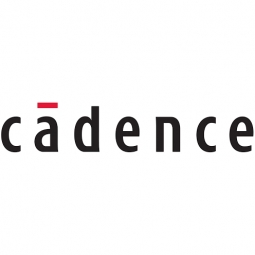Technology Category
- Analytics & Modeling - Digital Twin / Simulation
- Functional Applications - Enterprise Resource Planning Systems (ERP)
Applicable Industries
- Semiconductors
Applicable Functions
- Product Research & Development
- Quality Assurance
Use Cases
- Digital Twin
- Virtual Reality
Services
- Testing & Certification
About The Customer
Xilinx is a leading provider of Field Programmable Gate Arrays (FPGAs). The company offers a variety of soft IP cores for customers to build into their designs, as well as hard IP blocks implemented in silicon during fabrication. These offerings accelerate the development process through IP use and reuse. Xilinx's rich set of IP cores represents hundreds of communications standards, memory interfaces, DSP functions, floating point operators, interconnects, and even CPUs. To facilitate customer design customization for specific end applications, Xilinx IP solutions provide many user-configurable attributes.
The Challenge
Xilinx, a leading FPGA provider, offers a variety of soft and hard IP cores to its customers. These IP cores represent hundreds of communication standards, memory interfaces, DSP functions, floating point operators, interconnects, and CPUs. However, the company faced a significant challenge in testing its IP designs with all relevant combinations of parameter values. This exhaustive process required testing all major design modes with all possible data-width values. The conventional solution of creating an exhaustive permutation set of all parameters was not feasible due to the high number of combinations and the long turnaround time for running a regression. Xilinx needed a solution that could randomly generate parameter sets, considering the legal values of all parameters and the dependencies between them, while avoiding parameter set repetition and redundant duplication of test suite regressions.
The Solution
To address this challenge, Xilinx incorporated the Cadence Incisive Enterprise Simulator with Specman macros for enhanced parameter generation. This pre-simulation step became part of their regression flow. Cadence provided a macro for specifying which parameter sets needed to be exhaustively generated and which fields could be simply randomized, with as little repetition as possible. The solution was built on top of the Specman e language. This solution offered several advantages including flexibility, ease of use, and runtime improvements. It enabled easy layering of constraints, explicit generation of exhaustive sets, and random generation of other parameters without repetition. The solution was easy to use, requiring the end user to only specify the parameter values and constraints. The runtime improvements were significant, with the process that used to take over an hour now being manageable and efficient.
Operational Impact
Quantitative Benefit

Case Study missing?
Start adding your own!
Register with your work email and create a new case study profile for your business.
Related Case Studies.
Case Study
KINESYS Semiconductor Factory Automation Software
KINESYS Software provides both Integrated Device Manufacturer (IDM) and Original Equipment Manufacturer (OEM) customers world-class software products and solutions for advanced wafer and device traceability and process management. KINESYS offers state of the art database technology with a core focus on SEMI standards. KINESYS’ challenge was to make back-end processing failure-free and easy to use for clients while supporting licensing models more adaptable to changing industry needs.

Case Study
Modular AI Defect Inspection Solution for Efficient Semiconductor Equipment Upgrades
Smasoft Technology Co., Ltd., a System Integrator that develops industrial automation software and offers AI application solutions, was commissioned by a semiconductor equipment manufacturer to implement AI inspection features into their Extreme Ultraviolet Light (EUV) pod inspection machines. The existing AOI software in the EUV pod inspection machines could only identify defective products but could not trace the cause of the defects. The manufacturer wanted to upgrade their machines with AI features to make the products more useful. The AI solution needed to complete the analysis of 380 images for a single pod within two minutes and inspect different materials simultaneously. This required multiple sets of AI models for interpretation. The solution also needed to be installed in a cabinet in the lower half of the machines, which posed a challenge due to the limited space. Smasoft needed to purchase a hardware solution with strong computing performance, stable operation, compact size, and flexible configuration to overcome these challenges.

Case Study
Optimizing Semiconductor Manufacturing Yield with IoT
A large U.S.-based manufacturer of high-performance semiconductors was facing a significant challenge in optimizing the manufacturing process of its wireless products. The company, which designs and delivers a broad set of cutting-edge products including radio frequency filters, amplifiers, modulators, attenuators, and more, was experiencing lower than expected overall yield in some of its most complex products. This was affecting the company's productivity and profitability, and there was a need for a solution that could predict low-yield wafers early in the process and identify process improvements to increase overall yield.
Case Study
Rapid Hybrid Services Deployment for Global Semiconductor Company
The U.S. manufacturer of engineered materials, optoelectronic components, and semiconductors was focused on growth through mergers and acquisitions (M&As). In 2019–2020, it acquired a global electronics firm and needed immediate connectivity and visibility into the acquired firm’s geo-distributed operations. The company had a highly compressed timeline, with only days to integrate the firm’s DDI operations, while deferring a full network migration to a future date. The company was actively engaged in acquiring and merging strategically aligned companies as a key global growth strategy. The company needed to rapidly integrate its new operations, which included significant remote locations in Asia. The company turned to Infoblox to quickly design a highly secure, available, and reliable solution that could deliver full visibility into new sites. It needed dynamic scalability to accommodate its growing operations and the ability to unify a disparate, geo-diverse infrastructure.

Case Study
Sony Italia's Server Consolidation: A Cost-Saving Success
Sony Italia, a branch of the global electronics giant Sony Corporation, was facing a significant challenge with its IT infrastructure. The company had consolidated most of its IT infrastructure into two data centers in the U.K, but Sony Italia opted to maintain its local server infrastructure for high performance and ease of maintenance. However, as data volumes and user numbers grew, the servers began to experience reduced performance and reliability. The company had 30 physical servers, but with limited budgets, replacing all of them was not feasible. Additionally, Sony Italia was concerned about the increasing heat output and electricity consumption in the data center. The company had already virtualized about half of its infrastructure, but needed a more cost-effective solution to extend these benefits.








